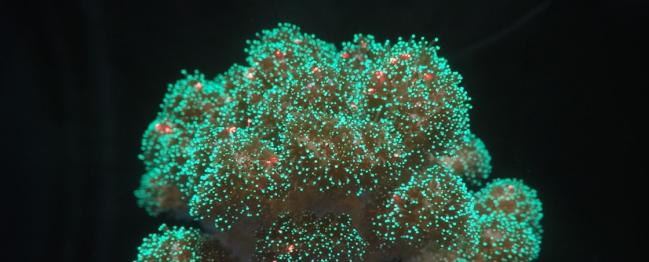Project aims
While plastic debris is ubiquitous in the ocean, our understanding of the interactions between corals and microplastics (MP) remains incipient. CORALASTIC is the first project to document how coral polyps respond to MP. For two branching corals species in laboratory experiments, we a) characterised the typical behaviours polyps display when exposed to realistic concentrations of fibres and irregular polyethylene terephthalate MP, b) determined whether these responses changed with MP shape, and c) whether MP interfere with the corals’ feeding and sediment-shedding functions.
Main findings
MP inflicted no visible behavioural stress to the branching corals examined. Although most polyps seemed indifferent towards MP, some inspected them actively for at least an hour, and only one consumed them once. Irregular MP were generally shed efficiently through water flow in less than 12h. Fibres entangled and formed clumps that were less efficiently rejected. When presented with both MP and natural foods, corals consumed twice as much MP than when exposed to MP alone, which heralds a potential impact of MP on the corals’ feeding function. Importantly, the presence of MP within reef sediments did not interfere with the corals’ ability to reject the latter.
CORALASTIC is the first to develop a cost-effective method to record polyp behaviour in the lab in response to microscopic debris. Our results are a timely contribution to the ongoing debate on whether MP pose a serious threat to marine biota or whether their influence is overemphasised.
We cannot discard that MP are a serious threat to corals. MP stay in contact with the coral tissue for several hours. Their threat to coral tissue is likely higher for corals living under poor water flow and exposed to MP that have adsorbed chemical pollutants.
Project Partner |
|---|
|
Prof. Dr. Tilmann Harder, University of Bremen |





